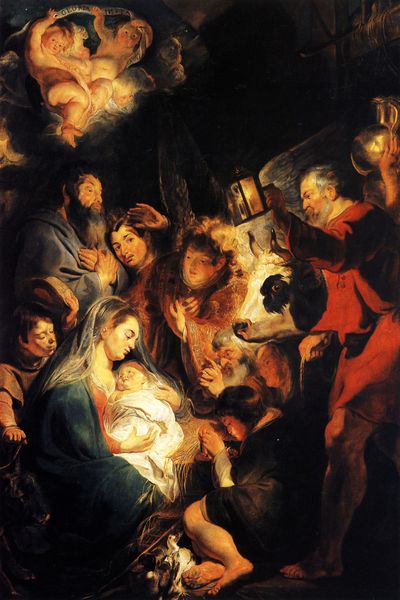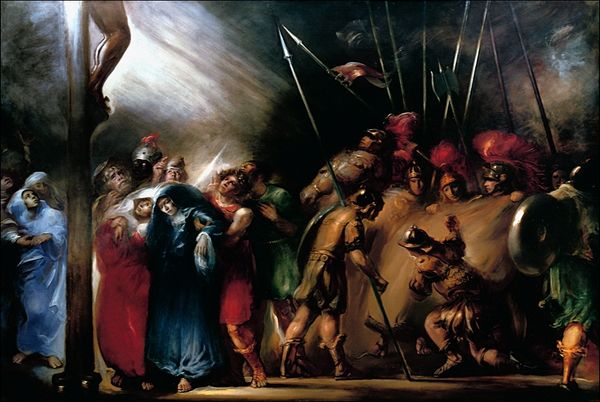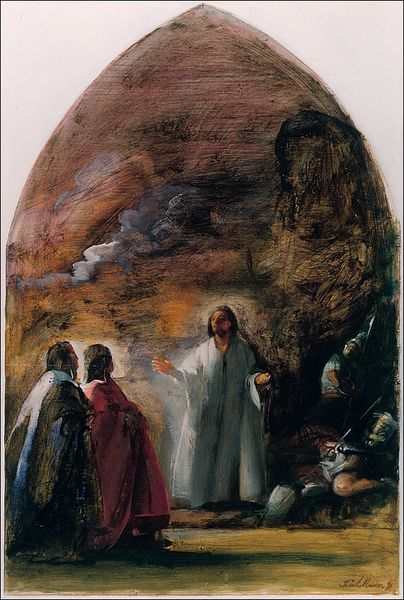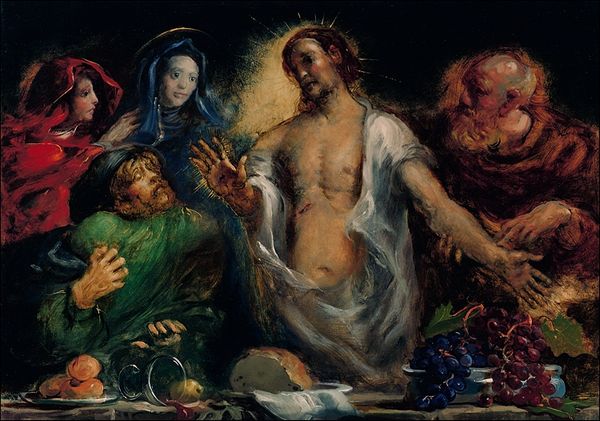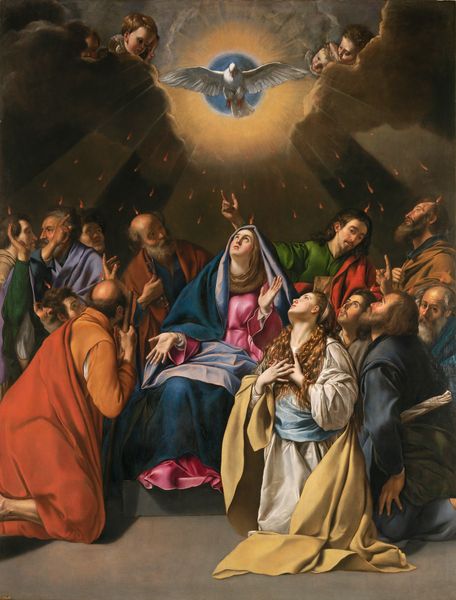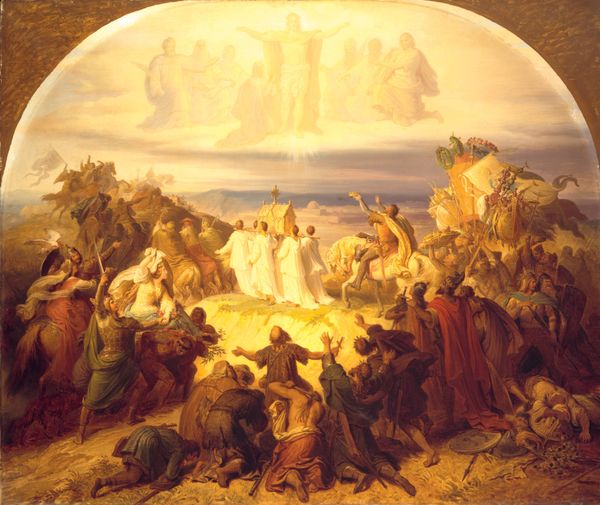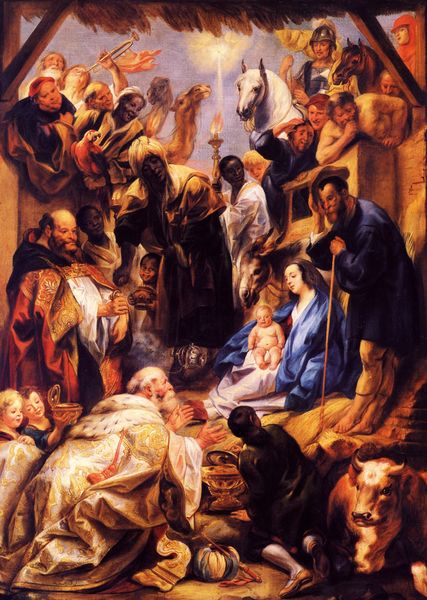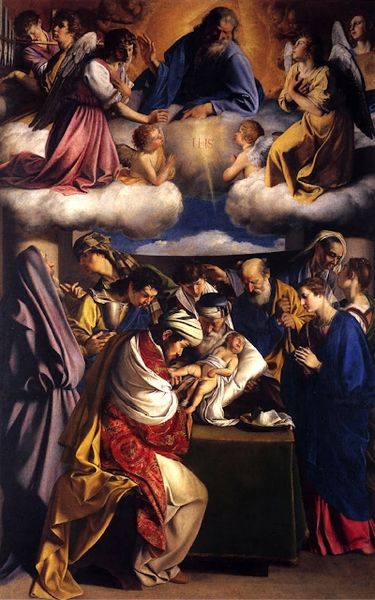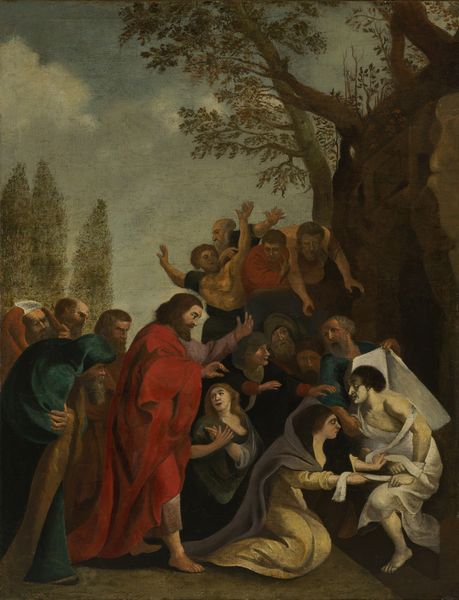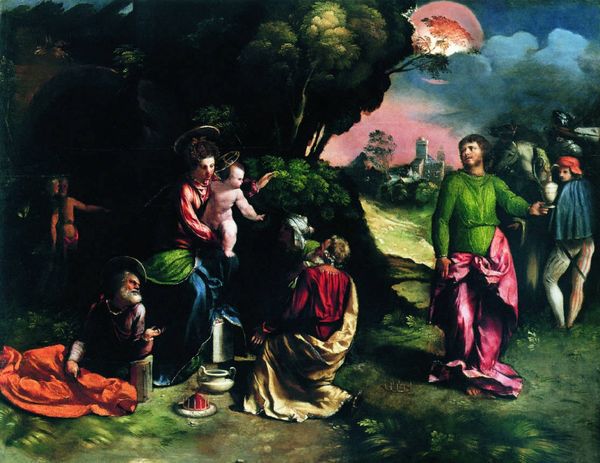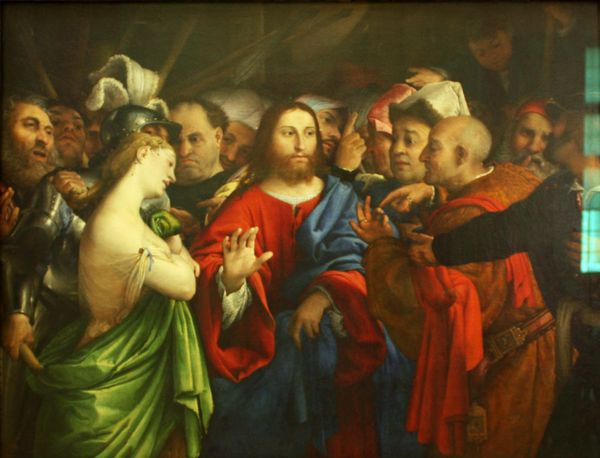
Copyright: Frank Mason,Fair Use
Curator: Frank Mason's 1973 oil painting, Christ Healing the Sick, depicts a biblical scene teeming with figures rendered in a style that blends realism with expressionistic elements. Editor: The first thing that strikes me is how dark it is; like a memory struggling to surface. The chiaroscuro is incredibly dramatic. Everyone seems to be caught between hope and despair. Curator: Right. Consider Mason's academic training; he draws deeply from the history of Western art while wrestling with mid-20th-century anxieties. His representation of Christ is less about divine power and more about earthly compassion in an era marked by social upheaval. The suffering portrayed here echoes the artist’s own historical context, influenced by his understanding of how different forms of oppression can effect identity and personal freedoms. Editor: Absolutely. The arrangement of figures and symbols contributes greatly. Christ’s light coloring separates him from a darkened landscape filled with shadowy figures. Note the warrior on the right, armed, in shadow. He’s a looming figure from a dying age of empire juxtaposed with an image of love and rebirth in the suffering faces clustered around Christ. This creates a powerful symbolic contrast. Curator: Precisely, and that contrast can be understood through contemporary dialogues surrounding power structures. Who gets to claim power, who is excluded from it, and what are the visual languages that perpetuate these power dynamics? Even Christ's vulnerability, presented amidst historical unrest, questions established roles. Editor: This feels like a rejection of old ideas, which finds beauty in the faces of those historically pushed to the margins of the world. We are all wounded, but the light exists nonetheless. Curator: I think it is so interesting how, even through this work’s traditional themes and materials, we are provided with opportunities to reflect on identity and societal expectations. Editor: For me, it's how Mason uses the familiar language of religious art to create a fresh, very human dialogue across time, mediated through universal symbols of pain and empathy.
Comments
No comments
Be the first to comment and join the conversation on the ultimate creative platform.
